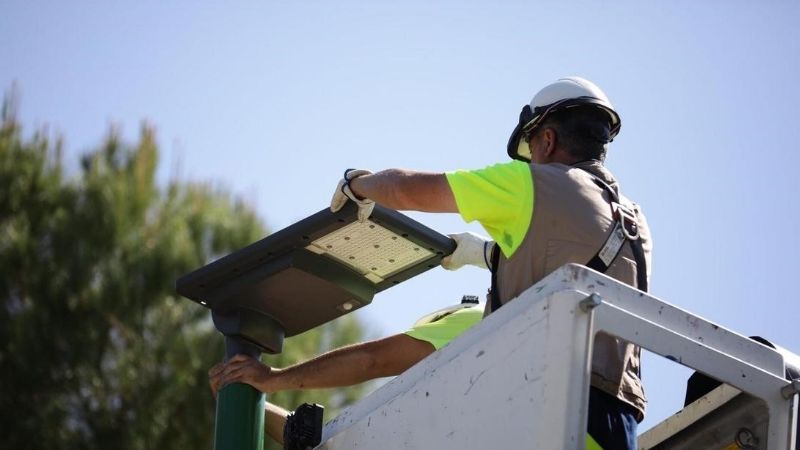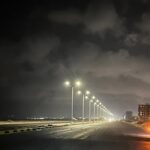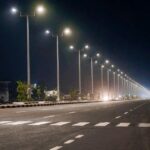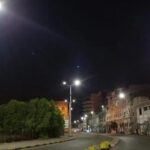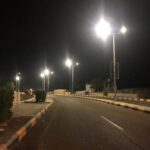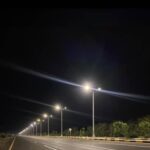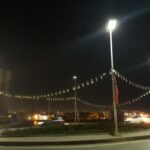Is it crucial to go through a solar street light data sheet? Absolutely. Prior to making your solar street light investment, it’s essential to thoroughly review the detailed solar street light data sheet, extracting all pertinent information. Delving into this document ensures you uncover the critical details necessary for an informed decision-making process. What key aspects should you be vigilant about? This is precisely the question we aim to address. Let’s embark on this journey of discovery together.

Why is a solar street light data sheet important?
A solar street light data sheet is crucial as it provides comprehensive details about the product’s specifications, performance metrics, and technical characteristics. This information helps you make informed decisions, ensuring compatibility, efficiency, and optimal functionality for your specific needs.
Crucial components of a solar street light data sheet
Now that you know why the data sheet is important, lets identify the crucial information that you should look out for;
Solar panel wattage and efficiency
The wattage of a solar panel refers to the amount of power it can generate under standard test conditions , typically expressed in watts (W). It directly correlates with the amount of electricity that can be produced by the solar panel. When examining solar street light data sheets, look for the rated wattage of the solar panel, which indicates its maximum power output. A higher wattage solar panel generally implies greater electricity production potential.
Solar panel efficiency measures the ability of the panel to convert sunlight into electricity. It is represented as a percentage and indicates the portion of sunlight that the panel can effectively convert into usable electrical power. Higher efficiency solar panels can generate more electricity from the same amount of sunlight compared to lower efficiency panels. When reviewing a solar street light data sheet, pay close attention to the efficiency rating of the solar panel.
Battery capacity
When scrutinizing the battery capacity section of a solar street light data sheet, several key factors warrant attention. At the forefront is the energy storage capability, denoted in ampere-hours or watt-hours, which dictates the amount of surplus energy that can be stored from the solar panels during daylight hours.
Moreover, the voltage rating of the battery is pivotal, as it determines the electrical potential at which the battery operates. Compatibility with the lighting fixture and overall system efficiency hinge upon this specification. Equally significant is the cycle life, representing the number of charge-discharge cycles a battery can endure before experiencing noticeable degradation. A higher battery capacity often correlates with an extended cycle life.
Depth of discharge (DoD) is another critical parameter to consider, indicating the percentage of total battery capacity that can be utilized before recharging becomes necessary. Balancing the depth of discharge with concerns for battery longevity is imperative for optimal performance over the system’s lifespan. Additionally, the battery’s performance is greatly influenced by temperature fluctuations, necessitating attention to the temperature range within which it can operate effectively.
LED wattage and Lumens
LED wattage signifies the electrical power consumed by the LEDs within the solar street light system. This parameter directly influences the energy consumption and efficiency of the lighting fixture. Higher wattage LEDs generally produce brighter illumination, but they also consume more power, potentially impacting the longevity of the system and the overall energy efficiency. When evaluating LED wattage in a solar street light data sheet, consider the balance between brightness requirements and energy efficiency.
Lumens on the other hand represent the total amount of visible light emitted by the LEDs. This metric is crucial for assessing the brightness and effectiveness of the lighting solution. Higher lumens indicate brighter illumination, enabling better visibility and enhanced safety in outdoor environments. When examining a solar street light data sheet, consider the specific lighting requirements of the intended application. Factors such as street width, mounting height, and ambient lighting conditions should guide the selection of an appropriate lumen output. Additionally, evaluating the lumens per watt (luminous efficacy) provides insights into the energy efficiency of the LED lighting system.
Lighting time
One of the pivotal aspects to scrutinize within a solar street light data sheet is the manufacturer’s recommendation concerning the amount of time the street light can stay illuminated. This recommendation typically stems from meticulous testing and analysis conducted by the manufacturer to ascertain the optimal operational duration while maintaining the longevity of the system’s components.
Solar street light data sheets often delineate various operational profiles and corresponding timeframes. These profiles elucidate the different modes of operation the street light can undergo based on factors such as ambient light levels, battery capacity, and energy conservation strategies. Understanding these profiles aids in aligning the operational parameters with specific lighting requirements and environmental conditions.
Furthermore, the solar street light data sheet may elucidate the correlation between lighting time and prevailing environmental conditions such as temperature, humidity, and geographic location. These insights enable stakeholders to assess the system’s performance under diverse climatic scenarios and make informed decisions regarding deployment and operational strategies.
Operating temperature range
When evaluating a solar street light data sheet, one of the critical parameters to consider is the operating temperature range. The manufacturer’s specified ideal temperature range indicates the optimal operating conditions under which the street light can deliver its maximum performance and efficiency. Deviating from this range may result in decreased efficiency, shortened lifespan, or even complete malfunction of the lighting system. Typically, the ideal temperature range provided by manufacturers lies between -20°C to 60°C (-4°F to 140°F). However, this range can vary depending on the specific components used in the solar street light system.
To ensure optimal performance and longevity of solar street lights, continuous monitoring and management of operating temperatures are essential. Based on your situation you can incorporate temperature sensors within the lighting system for real-time monitoring of temperature variations. Additionally, implementing thermal management techniques such as passive cooling fins or active ventilation systems can help mitigate temperature extremes and maintain the lighting system within the optimal operating range.
IP rating
IP rating is one of the most critical specifications to examine in the solar street light data sheet. IP stands for “Ingress Protection” and it is followed by two digits that indicate the level of protection the fixture offers against solid objects and liquids.
The first digit refers to protection against solid objects, such as dust, dirt, and debris. It ranges from 0 to 6, with higher numbers indicating greater protection. The second digit pertains to protection against liquids, such as water and moisture. This digit ranges from 0 to 9, with higher numbers indicating higher levels of protection.
Check what the IP rating of your desired solar street light is. We advise you to select solar street lights with a minimum IP rating of IP65. This rating guarantees protection against dust ingress and low-pressure water jets from any direction, making the fixture suitable for various outdoor environments. However, for harsher conditions or locations with high exposure to water, opting for a higher IP rating, such as IP66 or IP67, offers an added layer of protection.
Warranty
When evaluating a solar street light data sheet, one of the most critical aspects to scrutinize is the warranty provided with the product. First and foremost, it’s essential to examine the duration of the warranty. A longer warranty period typically indicates the manufacturer’s confidence in the product’s durability and reliability. Look for warranties that extend over several years, preferably covering the entire expected lifespan of the solar street light system.
Furthermore, the scope of coverage outlined in the warranty is crucial. It’s important to understand what components and aspects of the solar street light system are included in the warranty. Ideally, the warranty should provide comprehensive coverage for all major components, including both material and workmanship defects. In addition, pay attention to any specific conditions or exclusions outlined in the warranty. Some warranties may have limitations based on factors such as environmental conditions, installation procedures, or usage patterns. Understanding these terms can help in ensuring compliance with warranty requirements and avoiding potential voidance.
Check the process for warranty claims and support. A reputable manufacturer should have clear procedures in place for initiating warranty claims and resolving issues promptly.
Compliance and certifications
Certifications are emblematic of adherence to stringent industry standards and regulatory frameworks. When perusing a solar street light data sheet, you should prioritize certifications such as the International Electrotechnical Commission (IEC) standards. These standards encompass a range of criteria including photometric performance, durability, and electrical safety. Compliance with IEC standards assures stakeholders of the product’s resilience to environmental stressors, electrical hazards, and overall reliability in operation.
Additionally, certifications from recognized bodies like the International Organization for Standardization (ISO) validate the manufacturer’s commitment to quality management systems. ISO certifications, such as ISO 9001 for quality management and ISO 14001 for environmental management, signify adherence to rigorous processes and protocols in product design, manufacturing, and environmental sustainability. Always check the certifications in the solar street light data sheet.
Installation requirements
When examining a solar street light data sheet, one of the critical aspects to scrutinize is the installation requirements. First and foremost, attention should be directed towards the recommended mode of installation. This encompasses the preferred method by which the solar street lights should be installed to optimize their performance and longevity. It may involve pole mounting, wall mounting, or other configurations tailored to the specific requirements of the installation site.
Moreover, assessing the provision of an installation team or support services can significantly streamline the deployment process. Some solar street light manufacturers offer professional installation teams or comprehensive guidance to assist customers in seamlessly integrating the lighting system into their infrastructure. Evaluating whether such services are available can expedite the installation process while mitigating the risk of errors or complications.
solar street light installation
Conclusion
The significance of scrutinizing a solar street light data sheet cannot be overstated. It serves as a comprehensive guide, providing vital information essential for making informed decisions regarding solar street lighting solutions. Do you have any questions? Contact us.



